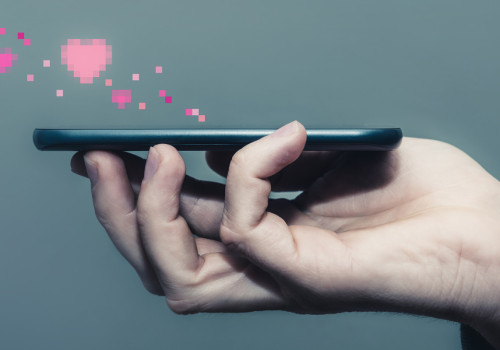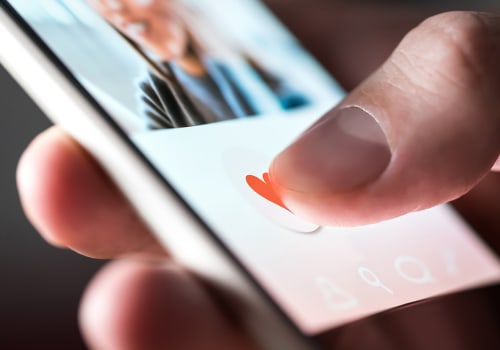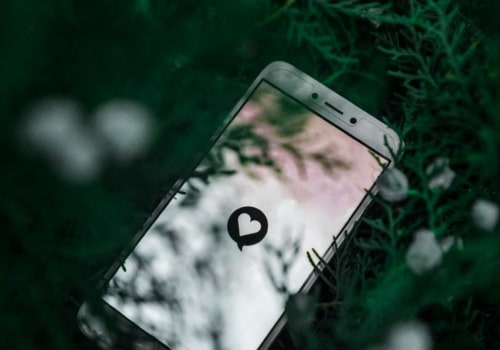Are you interested in testing our corporate solutions? Please don't hesitate to contact me. Overview and forecasts on trending topics Industry and market insights and forecasts Key figures and rankings for companies and products Insights and preferences of consumers and brands in various industries Detailed information on political and social issues All key figures for countries and regions All you need to know about consumer goods Identify the market potential of the digital future Information about the world's most important technology markets Information about the world's most important health markets Figures and information about the world of advertising and media Everything you need to know about the industry Development Key economic and social indicators Directly accessible data for 170 industries in 50 countries and more than 1 million. KPIs for more than 20,000 online stores In the next 6 chapters, you will quickly find the 35 most important statistics related to online dating in the United States. The most important key figures provide you with a compact summary of the topic of online dating in the United States and take you straight to the corresponding statistics.
Regarding general dating site usage statistics, there are two key things we want to look at. First, 19% of all Internet users say they are currently using an online dating site or app. Of the remaining 81%, 27% say they have used one before. This means that out of 10 of your friends, 2 of them are currently using an online dating app and 2 of them previously have.
Out of this 27%, 36% of those users say they are using their online dating apps on a daily basis in some way, shape, or shape, whether it's responding to messages, looking for new matches or just looking at photos of people they're interested in. In a recent study, 19% of Internet users in the United States stated that they were currently using an online dating app or platform. Even more interestingly, an additional 27% of participants claimed to have used an online dating app in the past, 2.The study found that 37% of online dating users said someone on a site or app continued to contact them after they said they weren't interested, 35% said they were sent an explicit message or picture, didn't ask for it, and 28% called them an offensive name. A smaller percentage (9%) said they were threatened with physical harm.
Overall, these numbers were much higher for women than for men, according to the study. Indeed, 48% of women who used online dating said someone continued to contact them after saying no; 46% received explicit unwanted images; 33% were called offensive names; and 11% were threatened with physical harm. For younger women, these numbers skyrocketed even further. Six out of 10 women ages 18 to 34 who used online dating services said someone through a dating site or app continued to contact them after they said they weren't interested; 57% received explicit unwanted images; 44% were called offensive names; and 19% were physically threatened.
Younger adults were also more likely to use online dating apps or websites than older adults. This is probably due to a combination of factors, including the convenience and ease of the younger generation with the newest technology, as well as the fact that many older users abandon dating apps because they eventually find themselves in long-term relationships. Pew found that LGB adults were also twice as likely as heterosexual adults to have used a dating app or website, at 55% to 28%. Another interesting finding from the Pew study is the success rate of online dating.
Despite problems associated with online dating, more people (57%) reported a positive experience compared to a negative one (42%). But overall, Pew found that people were quite ambivalent about how online dating apps and sites impact dating and relationships in America. Half of Americans believe that apps have no positive or negative impact, for example. In addition, a significant part of U, S.
Adults (46%) said they don't think it's safe to meet people through dating apps and sites. A higher proportion of women believed this (53%) than men (39%) figures that are likely related to women being harassed on apps more often. Full study delves into dating app usage and user sentiment along several lines, including demographic breakdowns, breakdowns by education level and user opinion. Overall, the results seem confusing.
In large part, users seem to be OK with online dating. Many think that it's pretty easy to find potential matches, even if it's not as safe. To a certain extent, users also seem to have agreed to being harassed as part of the online dating experience, given that most felt positive about online dating in general, despite the harassment they received. Other parts of the study seem to point to an understanding of the superficiality of online dating platforms, citing how important photos were to the experience (71% said it's very important) compared to other values that can make someone more compatible, such as hobbies and interests (36% said they are very important), religion (25% said it's very important), politics (14%), or even the type of relationship someone wants (63%).
Most people also believed that dating apps were rife with people who lied and scammed. 71% and 50%, respectively, said they think it's very common to find these activities on online dating sites and apps. In the end, it seems that those who have succeeded with online dating view it more positively than those who haven't, which is similar to how things work offline, too. About six in ten online daters with a bachelor's degree or advanced degree (63%) say their experience has been very or somewhat positive, compared to 47% among those with a high school diploma or less.
Despite not doing much to help themselves, 55% say strong security and privacy practices are important to them when choosing an online dating website, service or app, and only 12% don't know what the security and privacy practices are. We see a drop in those meetings only for dates from 35% to 29% from the 45-54 age group to the 55-64 age group. Even more interestingly, another 27% of participants claimed to have used an online dating app in the past. What also interests us is the second dating statistic listed that 44% of daters who use an online dating app are looking for someone who shares their values and beliefs.
Many people who are on the online dating scene are young, as suggested by the 33.8 average age, with 43% of 25-34 year olds using online dating services. With so many dating websites and apps available, it's now normal to use online dating to meet someone. When it comes down to it, 64% of people using online dating sites are looking for someone they have something in common with, and 49% say they are looking for someone with physical characteristics that appeal to them. This tech-savvy age group is likely embracing online dating as a way to meet new and interesting people while balancing a busy professional life.
Let's take a look at the online dating statistics you need to know about truthfulness, negative experiences, and how familiar people are with matches before they meet. Online dating provides users with the ideal place to meet people who have similar likes, dislikes and character traits to them. With the rise of catfishing, one of the biggest fears many singles looking to get into online dating have is whether the people they are talking to are sincere. .
.







Leave a Comment